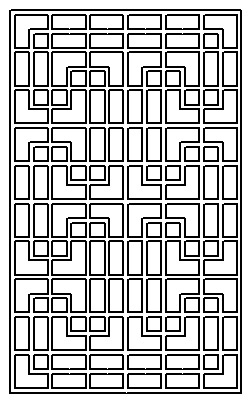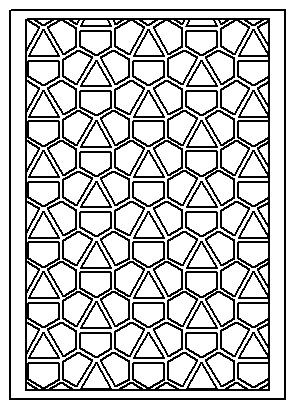Chinese Ice-ray Lattices Revisited
by Tuğrul Yazar | March 25, 2013 10:02
One of the cult texts in Shape Grammars theory is Stiny[1]‘s Chinese Ice-ray Lattices Grammars. Although it is full of technical terms, it represents an analysis of a working algorithm. We can directly transfer that from the behavior of an artist.
“One can imagine a Chinese artisan, summoned to a building site. He brings tools and implements and a collection of finely finished sticks. Then, he begins his design by selecting a stick of the appropriate length and carefully attaching it between two edges of the existing rectangular frame, thus forming two quadrilateral regions (shape rule 3). He continues his work by subdividing one of these areas into a triangle and a pentagon (shape rule 2).
He further divides the triangle into a triangle and a quadrilateral (shape rule I). Then, he divides the pentagon into a quadrilateral and a pentagon (shape rule 4). He made each subdivision in the same way. Attach an appropriately sized stick between two edges of a previously constructed triangle or quadrilateral or pentagon so that it does not cross previously inserted pieces. Each stage of the construction is stable; each stage follows the same rules. Indeed, the steps in the ice-ray lattice generation we give in Figure 5 could well comprise the frames in a motion picture of the artisan creating his design!”
Stiny, G., (1977), “Ice-ray: a note on the generation of Chinese lattice designs”
Here, I introduced a Grasshopper implementation of the subdivision algorithm of Chinese Ice-ray Lattices. Here is the Turkish translation of the above paper [PDF File][2].


- Stiny: https://en.wikipedia.org/wiki/George_Stiny
- [PDF File]: https://www.designcoding.net/decoder/wp-content/uploads/2013/03/2013_03_25-iceray.pdf
Source URL: https://www.designcoding.net/revisiting-chinese-ice-ray-lattices/